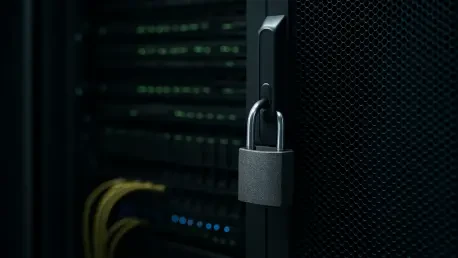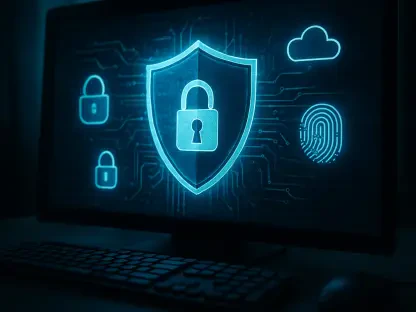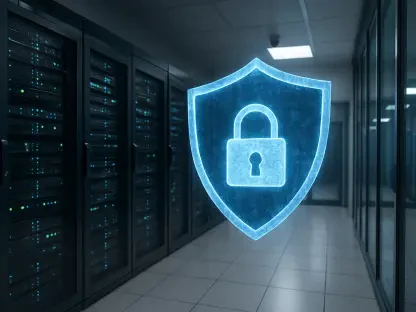In an era where cyber threats evolve at an alarming pace, the concept of Zero Trust has emerged as a beacon of hope for organizations striving to safeguard their digital assets from increasingly sophisticated attacks. Often heralded as a transformative approach with its “never trust, always verify” mantra, Zero Trust challenges the outdated notion of inherent trust within networks. Yet, as breaches continue to make headlines and security budgets soar, skepticism grows about whether this philosophy truly revolutionizes cybersecurity or merely rides a wave of industry hype. This article peels back the layers of Zero Trust, examining its core principles, the obstacles to effective implementation, and its potential as a cornerstone of modern defense strategies. The discussion aims to separate fact from fiction, offering a clear-eyed view of whether Zero Trust can live up to its promise or if it remains an elusive ideal in a landscape of persistent vulnerabilities.
Unpacking the Zero Trust Model
Foundations of a Security Philosophy
Zero Trust represents a fundamental shift in cybersecurity thinking, moving away from traditional models that assumed safety within a defined perimeter. Instead, it operates on the principle that no user, device, or connection should be trusted by default, regardless of location or prior access. Every interaction must be authenticated, validated, and authorized, creating a rigorous barrier against threats like ransomware or insider attacks. This philosophy aligns with today’s perimeter-less reality, where remote work and cloud environments have dissolved conventional boundaries. While the concept appears robust in theory, translating it into actionable security measures often proves far more complex. Many organizations find themselves grappling with the depth of change required, raising questions about whether Zero Trust is a genuine game-changer or a concept too idealistic for widespread adoption. The allure of a comprehensive defense is undeniable, but the path to achieving it remains fraught with challenges that demand scrutiny.
Missteps in Conceptual Understanding
A significant barrier to Zero Trust’s success lies in the widespread misunderstanding of what it truly entails. Far from being a product or a single tool, it is a holistic philosophy that necessitates a cultural overhaul within organizations. Too often, business leaders view it as a quick fix, expecting off-the-shelf solutions to deliver instant security. This misconception leads to superficial efforts that fail to address underlying vulnerabilities, leaving systems exposed despite the adoption of so-called Zero Trust measures. Experts emphasize that without a deep commitment to rethinking security postures, the philosophy cannot take root. Vendor marketing exacerbates this issue by rebranding existing tools like VPNs or firewalls as Zero Trust solutions, creating a false sense of protection. Such practices dilute the concept’s integrity, turning a potentially revolutionary approach into a buzzword that promises more than it delivers. Clarity and education remain critical to bridging this gap between expectation and reality.
Barriers to Effective Implementation
Pitfalls of Rushed Adoption
One of the most glaring obstacles to Zero Trust is the tendency for organizations to rush its implementation without adequate preparation. Driven by the urgency to address escalating cyber threats, many businesses adopt Zero Trust in name only, treating it as a checkbox on their security agenda rather than a transformative strategy. This haste often results in incomplete rollouts that fail to integrate critical components like continuous monitoring or identity verification. Without a thorough assessment of existing systems and a clear roadmap, these efforts become little more than theoretical exercises. The consequences are significant, as vulnerabilities persist despite the perceived adoption of cutting-edge security. Experts caution that such superficial measures can instill a dangerous overconfidence, leaving organizations exposed to sophisticated attacks. True Zero Trust demands patience and a willingness to overhaul entrenched practices, a reality many fail to grasp until it’s too late.
Operational and Technical Challenges
Beyond rushed adoption, the operational hurdles of implementing Zero Trust are formidable. Many organizations struggle with integrating legacy systems that were never designed for such a stringent security model, leading to compatibility issues that undermine effectiveness. Additionally, skills shortages within IT teams pose a persistent problem, as the expertise required to manage complex Zero Trust architectures is often in short supply. Maintaining rigorous validation processes for every access attempt also strains resources, particularly for larger enterprises with sprawling networks. These practical challenges frequently result in what has been dubbed “Zero Trust in PowerPoint”—a concept discussed in boardrooms but not executed in day-to-day operations. The gap between intent and capability highlights a critical flaw in the journey toward robust security. Addressing these issues requires not just investment in technology but also in training and strategic planning to ensure that Zero Trust moves beyond rhetoric into actionable defense.
The Potential of Zero Trust in Modern Security
Building a Robust Framework
Despite the challenges, Zero Trust holds undeniable potential as a framework for securing today’s dynamic digital environments. When implemented with discipline, it offers a powerful defense against the realities of a perimeter-less world where threats can emerge from any direction. Unlike traditional models that falter in the face of remote work and cloud adoption, Zero Trust’s insistence on continuous verification aligns with the needs of modern enterprises. Advocates argue that its failures often stem from execution rather than inherent flaws, pointing to successful case studies where meticulous planning has yielded results. Resources like the NIST guidelines on Zero Trust architecture provide a valuable blueprint for organizations aiming to move beyond hype. However, success hinges on treating it as an architectural approach rather than a plug-and-play solution. The evidence suggests that with the right commitment, Zero Trust can indeed reshape how security is approached in an era of relentless threats.
Adapting to Evolving Threats
Looking ahead, Zero Trust must evolve to counter emerging dangers such as AI-driven identity manipulation and sophisticated phishing schemes. Its core principle of relentless verification offers a foundation, but it cannot stand alone. Pairing Zero Trust with complementary practices like least privilege access ensures a layered defense that addresses multiple attack vectors. Experts stress the importance of adapting this philosophy to new technologies and threat landscapes, ensuring it remains relevant as adversaries grow more cunning. This adaptability requires organizations to foster a culture of continuous improvement, where security processes are regularly reassessed and refined. The integration of advanced monitoring tools and hardened identity controls becomes essential in this context. While Zero Trust provides a strong starting point, its true value emerges only when embedded within a broader toolkit, capable of responding to the unpredictable nature of cyber risks.
Reflecting on Zero Trust’s Journey
Lessons Learned from Past Efforts
Looking back, the journey of Zero Trust reveals a landscape of both promise and pitfalls as organizations grapple with its adoption. Early enthusiasm often gave way to frustration when rushed implementations failed to deliver expected results, exposing gaps in planning and execution. Vendor-driven hype played a significant role in these missteps, as rebranded tools created confusion rather than clarity. Research shared at industry events underscored persistent vulnerabilities in products marketed under the Zero Trust banner, highlighting a disconnect between marketing claims and real-world security. These experiences taught a hard lesson: Zero Trust demands far more than a superficial commitment. It requires a fundamental rethinking of security culture, a lesson that many learned only after costly breaches. Reflecting on these challenges provides critical insights into what went wrong and why, shaping a more nuanced understanding of how to approach this philosophy moving forward.
Charting a Path Forward
As the cybersecurity landscape continues to shift, the focus must turn to actionable strategies for making Zero Trust a reality. Organizations should prioritize comprehensive assessments of their current systems, identifying areas where verification processes can be strengthened without disrupting operations. Starting with less critical environments for testing new models can minimize risks while building expertise. Leveraging resources like NIST’s detailed guidance offers a structured approach to overcoming common hurdles. Beyond technical measures, fostering a security-first mindset across all levels of an organization remains paramount, ensuring that Zero Trust principles are embedded in daily practices. Collaboration with trusted partners and investment in ongoing training will also play a vital role in addressing skills gaps. By treating Zero Trust as a journey rather than a destination, businesses can build resilient defenses tailored to an ever-changing threat environment, turning a once-hyped concept into a cornerstone of sustainable security.









